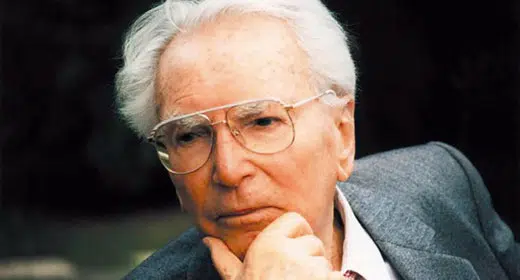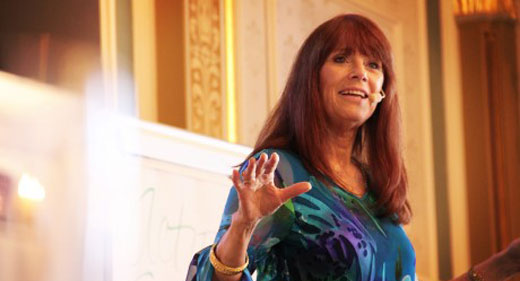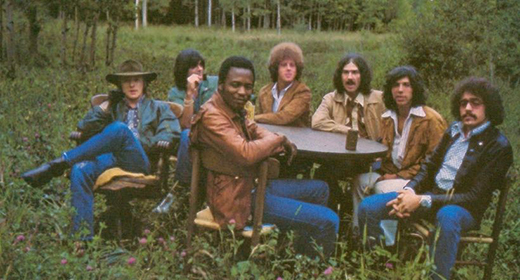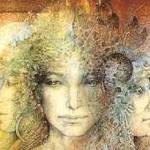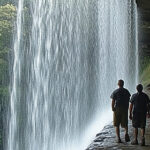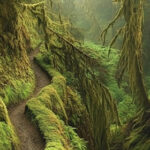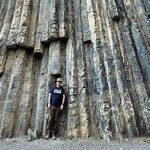by Ken Wilber: The big question series – question 2…

In this series Ken Wilber explores some of humanity’s most profound and perennial questions: Why is there something instead of nothing? Is there a God? Is there life after death? What is consciousness? These are questions that we humans have been asking since the dawn of humanity; questions that have inspired history’s greatest philosophers, sages, and scientists; questions that have in many ways influenced the overall shape and scope of civilization over the millennia. We continue to ask ourselves these questions today—often beginning in childhood, and then again and again throughout the rest our lives. Although these questions are in many ways unanswerable, our attempts to answer continue to come closer and closer to the inexpressible truth as our understanding of the universe (and our place within it) continues to unfold and evolve.
Welcome to Big Questions with Ken Wilber, bringing more clarity, more sophistication, and more elegance to our understanding of life, the universe, and everything.
Can we prove the existence of God?
It always comes down to that: “How can you prove the existence of Spirit or God if you’re so convinced that it exists?” Part of the problem is that we tend to try to prove Sprit’s existence with tools that can’t actually do the job. And we tend to be unaware of the type of tools that can prove Spirit’s existence. So I’ll run through what some of those are, and give an example of what’s involved.
So it’s actually very experimental and very scientific. It rests on the fact that there is a scientific method, and this method can be applied to any number of domains. It can be applied to the eye of flesh, the eye of mind, and the eye of contemplation.
So what is this method? Very briefly, it has three major components. It has an injunction or experiment or exemplar, which is always in the form of “if you want to know this, do this.” And once you do that, it results in an experience, or what William James called a datum, or an illumination—some sort of direct immediate experience. And that’s the second strand. And then that experience or data is checked with others to make sure that they get the same results, to make sure that you’re not hallucinating or getting it wrong or somehow confused.
So let’s say, using the eye of flesh, we want to know if it’s raining outside. Very simply, we go to the window and look. That’s the injunction—if you want to know if it’s raining outside, go to the window and look. We look, and yes it does indeed seem to be raining. That’s our experience, our data, our illumination. We do the injunction and we have an experience, we see the data. To make sure that we’re not hallucinating or otherwise mistaken, we ask someone else to take a look as well. They go to the window and yup, they see it raining too. So that’s our confirmation or verification, our third major strand.
All science has those three strands. When applied to the eye of flesh we get physics, chemistry, biology, and so on. When applied to the eye of mind we get things like logic and mathematics. But what’s not often understood is that it can be applied to the eye of contemplation as well. And here it offers proof of the existence of Spirit, every bit as real as rain or mathematics.
So what we’re talking about is that there’s sensory experience, there’s mental experience, and there’s spiritual experience, and each of these experiences give particular types of data or information or knowledge. Too often we have attempted to try to prove the existence of Spirit by using the eye of flesh and the eye of mind. Aristotle’s proof of God, he gave five proofs, and they were all logical. But that won’t get it—it doesn’t touch Spirit, it doesn’t activate the spiritual dimension in us.
So if we want to see how it can operate in a spiritual practice, we can take Zen as an example. The injunction here, the practice or exemplar, is zazen or meditation or contemplation. You’re taught to sit in a relaxed position, rest the mind, and focus it on one item. It could be following the breath, or it might be an inquiry like “who am I?” And this is the first strand, the injunction or activity or exemplar—if you want to know whether Spirit is real, do this.
After anywhere from several months to a year or two, you will start having a series of experiences, interior data or illuminations. These profound experieces or experieces of a spiritual nature are called kensho, which means “seeing into true nature.” This is strand two, the direct experience Spirit itself—naked, unmediated, real, and direct. This direct religious experience is said to be of Spirit itself. Even in the case of individuals who have a Ph.D in science and who experience kensho, over 95% report that kensho is as real as anything that they study in conventional science. It’s a very powerful, convincing experience.
And just recently someone had an experience that for some reason made all the news, a neuroscientist who had a near death experience, but it was so real to him that he was simply, absolutely, 100% convinced that this was a real experience, as real as anything he had ever experienced. That’s exactly the same kind of feeling that mystics have when they have a kensho, or a mystical experience, or an experience of oneness or unity. And he said he couldn’t find it described anywhere until he was looking through some Christian mysticism books and he found an explanation that spoke of infinite darkness suffused with luminosity. And he said that was it exactly! Anyone who knows the stages of meditation will recognize that as a causal state, it’s described that way in every major meditative tradition the world over. But of course we’ve so forgotten about this in the West that we just don’t know where to look. So he was completely confused until he found that one particular explanation.
After the individual has had their unity experience, their awakening experience, just to make sure they check with a spiritual teacher and a community of practitioners. Now this means all those who have completed the first two strands. If you want to vote on whether the Pythagorean theory is real, you have to learn mathematics, and then learn the Pythagorean theorem, and once you have completed the injunction and have had the experience of looking at the triangle and looking at the Pythagorean theorem, thenyou’re allowed to vote and confirm or not confirm whether it’s real. Most people who do that report that the Pythagorean Theorem is real.
But the same thing is true in any other scientific experiment, and it’s true for this interior science of contemplation. So you check it with a spiritual teacher and a community of practitioners, all those who have completed the first two strands of injunction and illumination, just to make sure you’re not hallucinating or otherwise confused, just like in all the other sciences. If their illumination, the discovery of their own True Self that is one with Spirit, matches those in a larger community of knowledge-holders, then their kensho is passed and their realization is confirmed.
So notice this is a real science, a direct and immediate 1st-person experience. It’s not anything taken on faith or mere belief, but a direct realization. And this is true whether the contemplation is Christian, or Buddhist, or Jewish, or Islamic, or Hindu, and so on. And this realization proves that Spirit is just a real as mathematics, or logic, or rain, or rocks. And those who have had that experience, even if they have Ph.Ds in science, take it as being as real as anything that they know. So it’s as real as “real” has any meaning. It’s a direct injunction, giving immediate data or illumination, and checked with a community of the adequate.
This is why contemplative knowledge is public knowledge, in both the East and the West it has been passed down for hundreds, sometimes thousands of years. That’s not private knowledge. Anything that can be trained and passed down is public, and it all reaches that same conclusion: God is real, and tat tvam asi—you are that.


